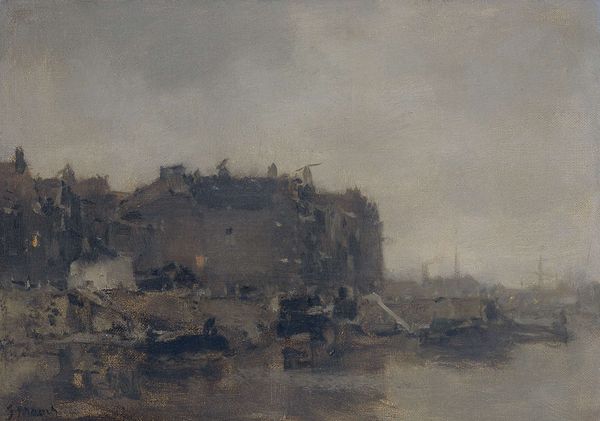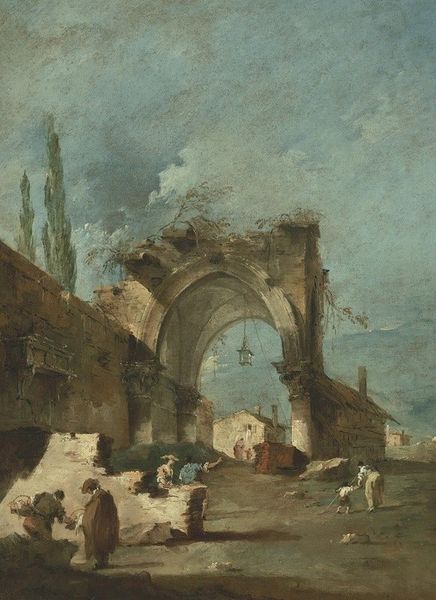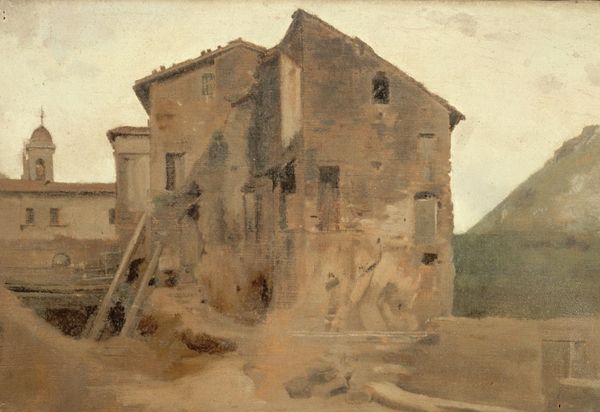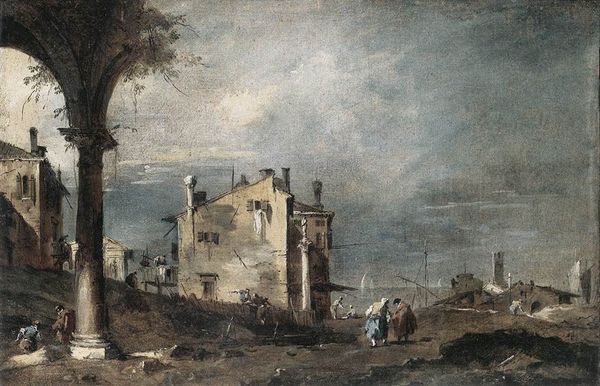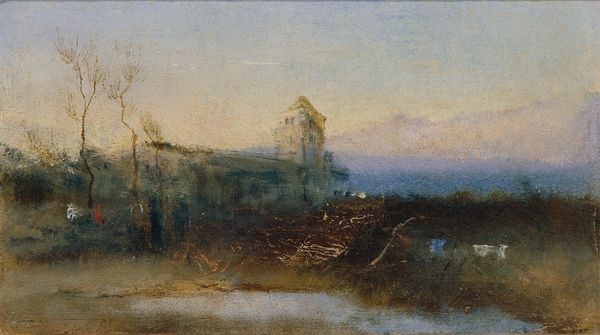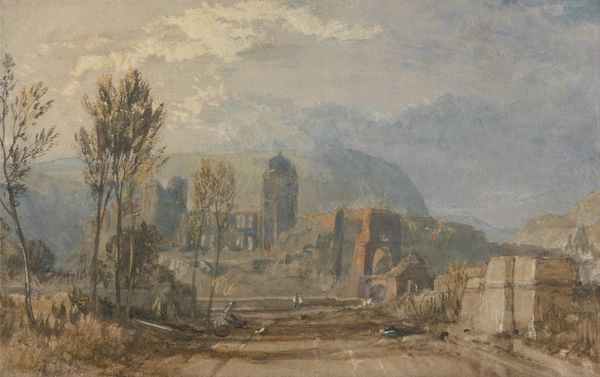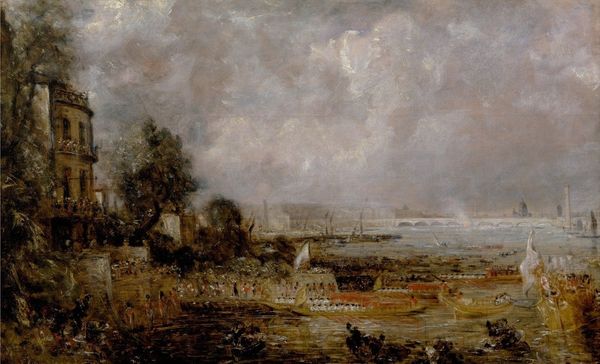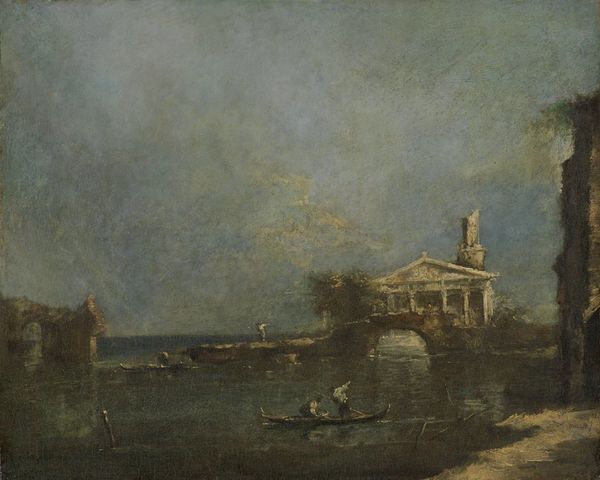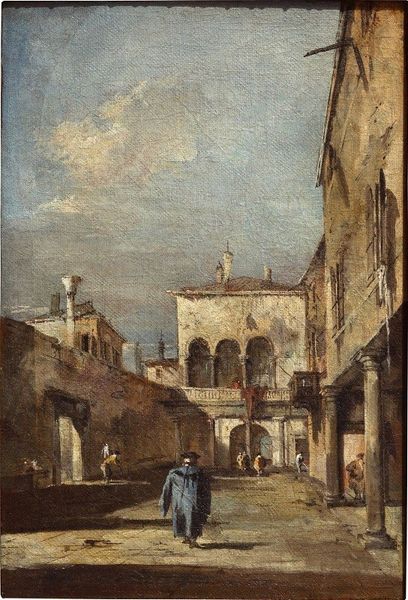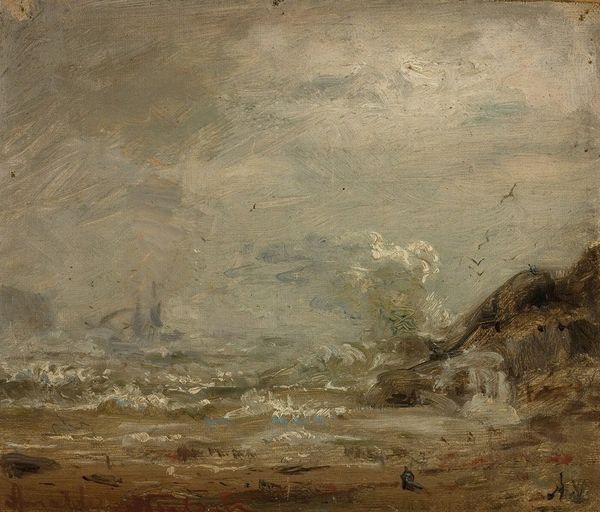
oil-paint
#
venetian-painting
#
baroque
#
oil-paint
#
landscape
#
oil painting
Copyright: Public Domain: Artvee
Curator: Let's turn our attention to this captivating "Capriccio Coastal Landscape With Figures On The Shore Beneath An Arcade," an oil on canvas attributed to Francesco Guardi. What strikes you initially? Editor: It evokes a certain melancholy. The muted palette, predominantly browns and greys, coupled with that looming sky, creates a rather somber atmosphere, wouldn't you say? Curator: Precisely. Guardi masterfully manipulates light and shadow to establish depth and drama. Note how the architecture—the arcade itself—functions as a framing device, guiding the viewer's eye towards the figures on the shore and the distant horizon. The impasto technique is also worth noting, lending a textural richness to the depiction of the crumbling edifice. Editor: Crumbling indeed. The dilapidated state of the arcade and surrounding structures feels symbolic, almost allegorical. Perhaps representing the decline of Venetian power or a commentary on the transient nature of earthly achievements. It makes you wonder who this was made for, who benefitted from paintings of things decaying? Curator: An intriguing interpretation. One could also argue that Guardi employs the "capriccio" style to liberate himself from the constraints of topographical accuracy, indulging in imaginative reconstruction. Editor: Possibly. Yet the inclusion of those figures – rendered almost as if afterthoughts – introduces an element of human drama. Their placement near the water and beneath the arcade could be read as them grappling with life's precarity in Venice, vulnerable, if you will, within spaces offering little support. I’m thinking particularly of Venice’s history with repeated pandemics. The painting style belies darker contexts. Curator: A valid point. Guardi's application of color is worth re-emphasizing. The restricted tonal range creates an effect where even the subtlest variations become significant, don't you think? Editor: Yes. And if we focus again on those variations, the figures at the sea almost vanish amidst the colors of ruin. The fact that there's even enough life to still support sea travel is what shocks me; but if not by the sea, how would the people of Venice travel? Maybe there’s an ecological point here too... Curator: Fascinating thoughts. Thank you. Ultimately, Guardi leaves room for us to project meaning and appreciate its masterful design, irrespective of the specific historical or social conditions informing the view. Editor: Absolutely. Guardi’s ability to prompt contemporary questions with brushstrokes that belong to another era offers invaluable opportunities for nuanced critical debate today.
Comments
No comments
Be the first to comment and join the conversation on the ultimate creative platform.
